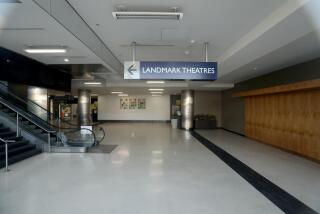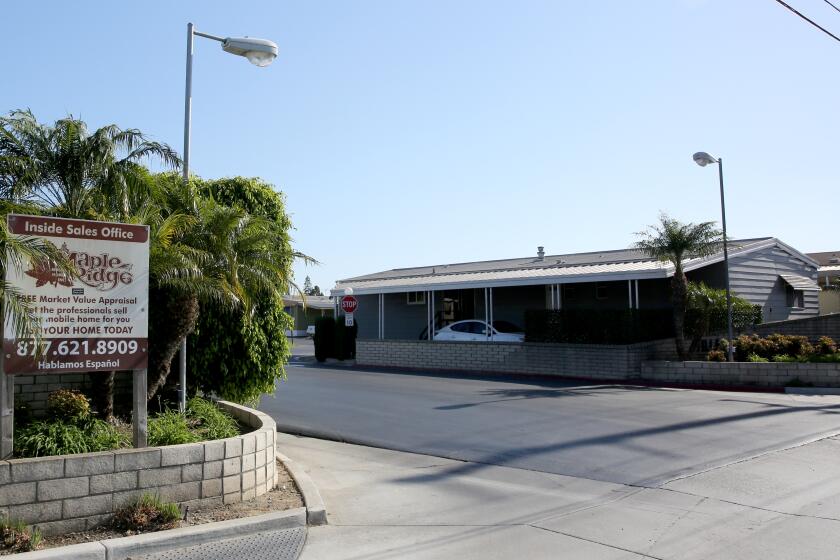Once L.A.’s hottest mall, the Westside Pavilion is dying, and shoppers are bummed
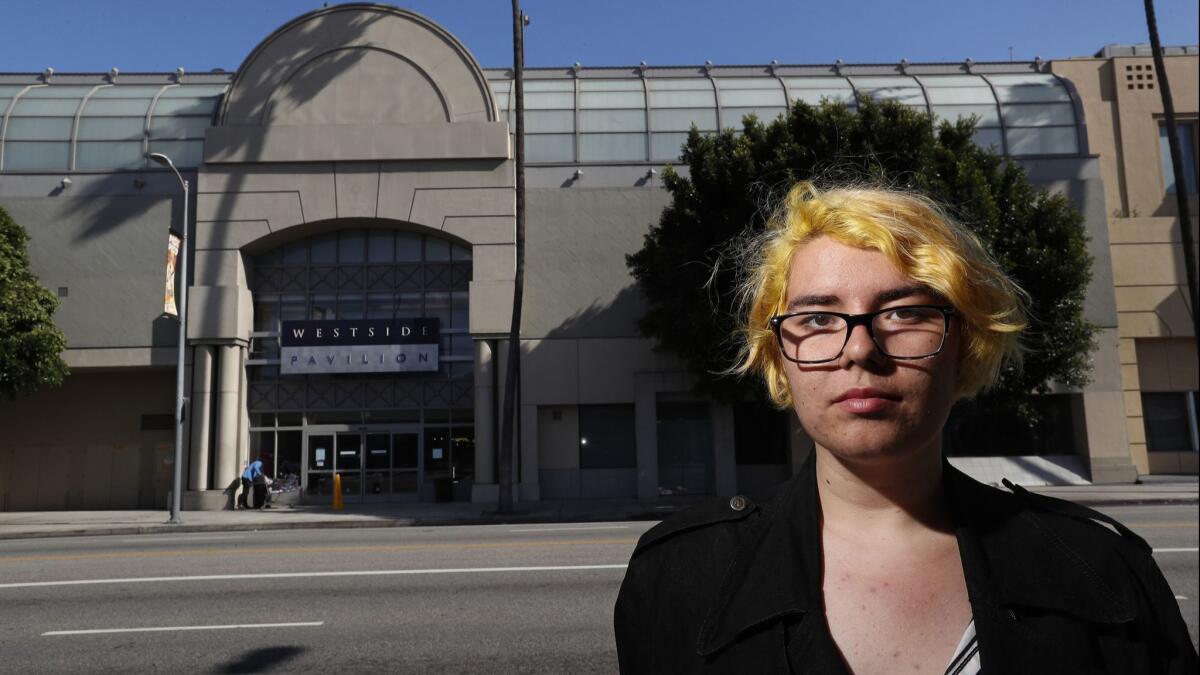
- Share via
On a recent Monday afternoon, Emma Halbert sat across from her friend at the Westside Pavilion food court. With her laptop opened in front her, she tried to finish her homework, but was distracted by how eerily quiet the mall felt.
The 18-year-old Santa Monica College student looked around the empty mall and turned to her friend, Kamanaopono Bednorz.
“No one comes here anymore,” Halbert said.
“Yeah,” Bednorz replied. “But as long as there is free Wi-Fi, I’ll keep coming.”
It’s a humble ending for a place that was once considered Los Angeles’ hottest mall. It’s where popular movies such as “Clueless” and Tom Petty’s video for “Free Fallin’” were filmed. It was also a place neighbors fought against for years but came to cherish when Nordstrom opened one of its first stores there in the West Los Angeles area.
But like so many American malls, Westside Pavilion has fallen.
In recent years, as more consumers turned to online shopping and nearby competitors — Westfield Century City, Santa Monica Place and the Third Street Promenade — underwent renovation to adapt to retail’s changing landscape, Westside Pavilion has found itself financially strapped and struggling to reinvent itself.
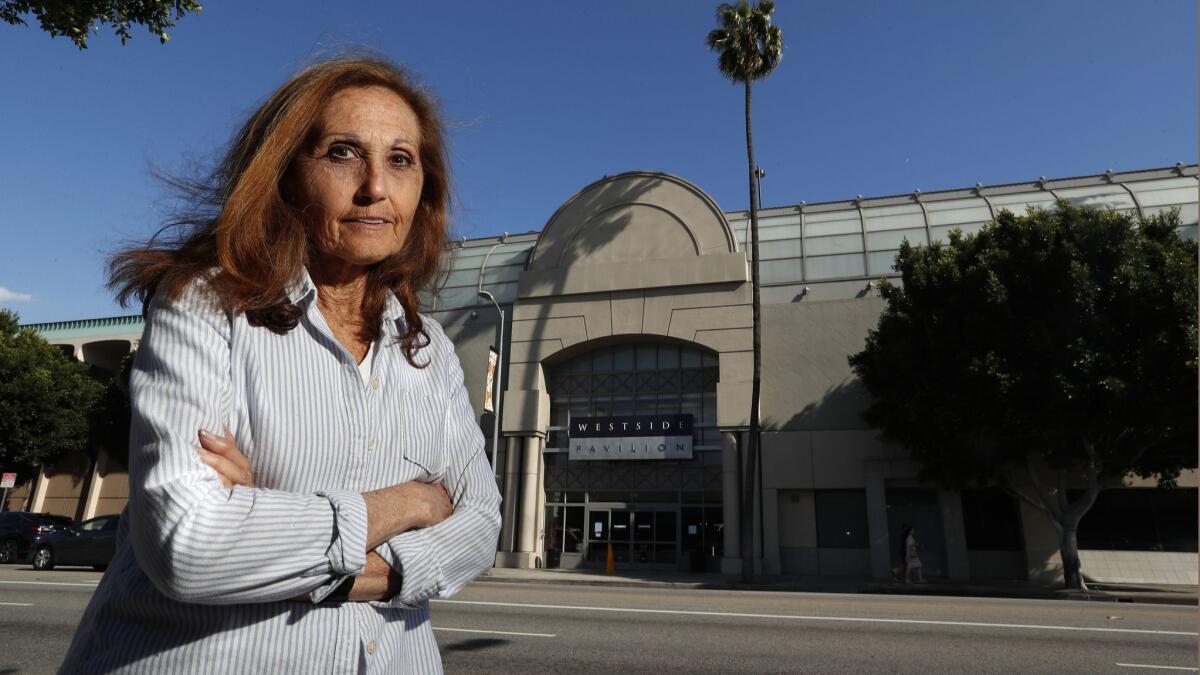
Its downfall continued last year when Nordstrom closed its store and relocated to Westfield Century City. And then in March, its last anchor store, Macy’s, decamped.
Now the mall faces an inevitable death: In March, mall landlord Hudson Pacific announced that by mid-2021 most of the barren three-story structure will be transformed into creative office spaces for media and technology companies, a befitting change as demand for office spaces in West Los Angeles continues to increase, but marking an end of an era for the longtime famed indoor mall.
Experts and elected officials say Westside Pavilion’s rebirth into office spaces is an example of West Los Angeles’ growing appeal to media and technology companies.
But longtime residents and shoppers worry that transforming the mall into office spaces will change the character of the neighborhood, which after early opposition largely came to see the mall as a town square of sorts.
“Opponents eventually got used to the mall, and now it’s an icon and part of the neighborhood,” said Los Angeles City Councilman Paul Koretz. “The mall gave us a little sense of community, a place to go and meet people.”
And although developers intend to keep the mall’s Westside Tavern restaurant and 12-screen Landmark Theaters open to the public, other community members feel saddened by the mall’s downfall and nostalgic for the memories that will vanish.
The fate of Westside Pavilion is not unique. Over the last decade, malls nationwide have slowly been rotting away and eventually closing because of change in shopping tastes.
Retailers have closed stores, forcing department malls to either shut their doors or scale back operations.
As a result, revenue in the shopping mall industry has declined steadily over the last decade at around 1%, including a 2.5% decline in 2017, according to a 2017 shopping mall management report from IBISWorld.
The situation has driven developers and landlords to come up with innovative solutions, such as converting malls into apartments, churches or schools and, in some cases, office space.
Although the mall will remain open until mid-2021, its already beginning to look unrecognizable.
Long gone are the days when the mall bustled with shoppers scurrying across its tiled floors, gripping their shopping bags as they browsed popular retail stores.
But now, on any given day, the vast amounts of parking spaces remain empty and shoppers walk slowly throughout the mall, some looking unfazed as they pass rows of empty stores that have either closed or relocated to a different mall.
The remaining retailers desperately try to lure customers with discounts — some have giant banners hanging in front that read “50% off” or “Buy one get one 50% off!”
For Halbert, the mall’s closure is akin to losing a sanctuary.
She said it was at the mall where she learned to make friends as a 5-year-old while playing at the indoor playground near the food court.
In middle school, it’s where she got her first taste of independence, spending Saturday afternoons checking out the latest fashion at Hot Topic and Forever 21 without adult supervision.
When she was 16 and a senior at the Los Angeles Center for Enriched Studies, she went to Nordstrom and had her makeup done by professionals for homecoming.
“Coming to the mall these years felt freeing,” she said.
“I’m sad it’s closing. It’s always been more than just a place where I could purchase stuff.”
Some employees feel the same.
Michelle Arellano, who has worked six years at Justice, a popular clothing store for teenagers, said young adults who shopped at the store as children still stop by the store to visit her.
“I remember when some of the kids were little, and now they are graduating high school,” she said.
“I have a close relationship with the customers.”
Nearby, Ilene Schwartz watched her 7-year-old daughter, Jocelyn, dance around the first floor of the mall from a nearby table.
For years, the duo have come to Westside Pavilion at least a few times a week, preferring its indoor environment and affordable prices to that of more expensive retailers such as nearby Century City.
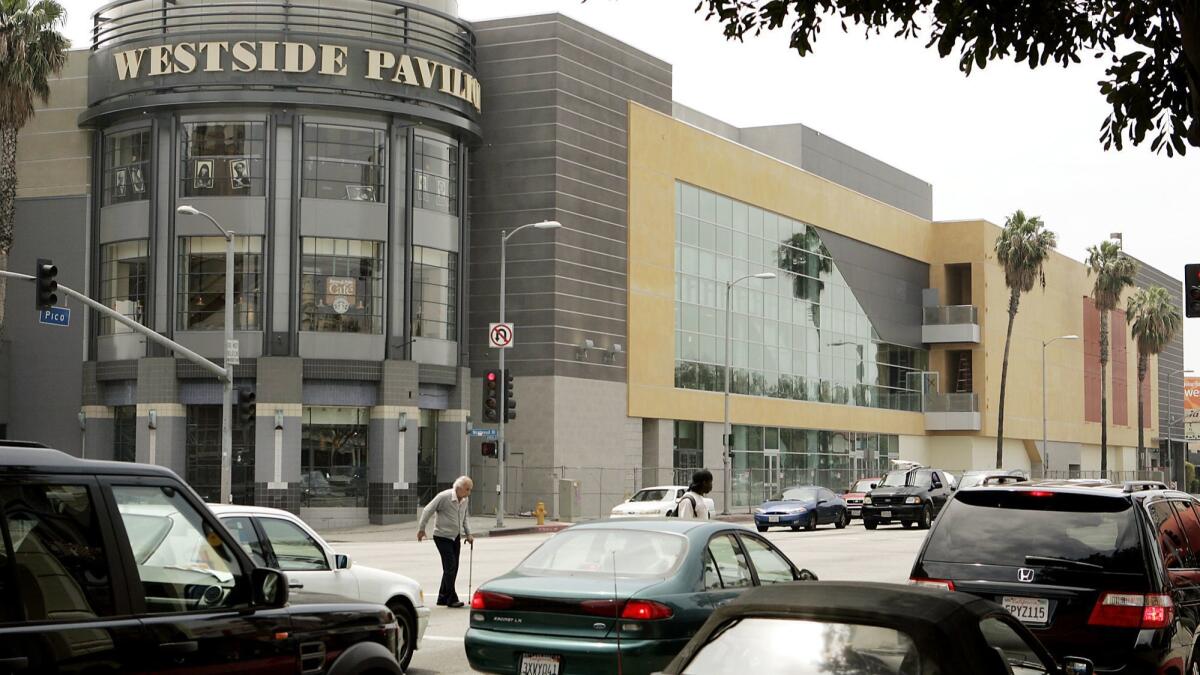
As her eyes remained fixed on her daughter twirling in circles, Schwartz said she’s saddened that in a few years her daughter won’t experience this any longer.
“Part of her childhood that she could have had here will be gone,” Schwartz explained.
Despite the mall’s desolate feel, Schwartz remains steadfast in continuing her tradition for as long as she can.
“It feels weird to come here, but we want to come here until it’s gone.”
Owen Rooney shares similar views. As he rode the escalator up to the third floor, his son ran ahead into GameStop, a video game store.
“That’s his favorite place to go,” Rooney said of his 12-year-old son, Owen Jr.
“It’s a tradition to come here.”
Like most nearby residents, Rooney said he’s been coming to the mall at least once a week since his son was born, but says in recent years the mall has felt different.
“It’ll be different when we can’t come here anymore.”
Despite the fond memories for some, the Westside Pavilion wasn’t always a place the community cherished.
Before opening in 1985, the mall’s landlord faced great resistance from local residents who viewed the project as the type of development that would increase traffic congestion and create parking issues.
Terri Tippit, the chairwoman for the Westside neighborhood council and 40-year Rancho Park resident, said for a long time the three-story, block-long structure felt like an “intrusion.”
“The local residents fought long and hard when the concept first came up,” the 71-year-old said.
Tippit worked alongside then Los Angeles City Councilman Zev Yaroslavksy and the mall’s landlord to come up with solutions to ease traffic around the mall.
“The whole project was a shock to the neighborhood,” Yaroslavksy said.
“People were not happy about it.”
By the late 1980s and early ’90s, the situation began to improve.
Streets near the mall became designated as permit parking, and 1,000 parking spaces and a two-tier bridge for cars and pedestrians were built when the mall expanded across Pico and Westwood boulevards.
Then in 2007, Landmark Theatres opened a new 12–screen facility.
It didn’t take long after the traffic issue was addressed that residents began to embrace Westside Pavilion, turning it into an integral part of the West Los Angeles landscape.
Designed by architect Jon Jerde, thick white columns inside the mall link each level together, mirroring a European-style structure. And its clear skylights, which span vast portions of the mall, allow natural light to seep inside.
But despite its popularity, Westside Pavilion has not been able to adapt to retail’s changing landscape.
Chris Calott, professor of architecture and real estate development at UC Berkeley, estimates that up to 40% of shopping malls could close within the next three to five years.
Calott said the mall’s transformation reflects the growing demand of office space from municipalities and developers across California
“We are at a point in the Bay Area and Los Angeles where both areas have a particularly high demand for office space,” Calott said.
“Office development pays a lot more in taxes than residential or commercial development. So from a development standpoint, that will deliver the sweetest revenue return.”
The transformation project is estimated to cost around $425 million to $475 million.
Hudson Pacific, which specializes in developing and operating office properties on the West Coast, will act as developer and be in charge of the day-to-day operations as the property’s manager.
Former mall landlord and owner Macerich also contributed to the new joint venture with Hudson Pacific and owns 25%.
But some residents are disappointed that future plans for the mall don’t include housing, and worry that turning the mall into office spaces will increase traffic and change the culture of the neighborhood.
Given the mall’s close proximity to bus stops, the Santa Monica and San Diego freeways and Expo Line along Westwood Boulevard, planners view it as a coveted location, said Evelyn Blumenberg, a 20-year Rancho Park resident and urban planning professor at UCLA.
“It’s an area that is accessible by public transit, and so there’s an assumption that it could lead to a thriving community and be easy access to markets and potential employees,” Blumenberg said.
But she also added that she’s “personally disappointed” that the development doesn’t include housing.
“Housing is becoming so expensive. It’s an ideal location for transit, and it should be accompanied by housing that includes affordable units as well.”
Chris Barton, Hudson Pacific’s executive vice president for development and capital investments, said although the developer didn’t consider housing as an option for the mall, it is dedicated to addressing community members’ concerns.
“We are actively studying current and future conditions regarding traffic, and we are prepared to work with the city and community to ensure there is no impact,” Barton said.
“We also plan to work closely with the community to ensure that the redevelopment will complement the neighborhood’s character and become an asset to the community.”
As Tippit and Yaroslavsky reflect on their part in shaping the mall’s history, they feel proud about what the mall has come to mean for residents.
“Back then, I would have never imagined the mall could close. And if you told me people would be upset or sad, I would have told you that was impossible.” Yaroslavsky said.
“The mall was controversial during my election in 1989. I didn’t do well with voters who lived in the streets behind the Westside Pavilion.”
Even Tippit, who at first was against development of the mall, has come to feel saddened by its death. In recent years, it’s become a tradition for her to walk hand-in-hand with her 12-year-old granddaughter to the mall, a bonding activity she said would have otherwise been impossible.
“We walk together and chat on the way to the mall and watch movies,” Tippit said.
“These are moments you can’t buy and can’t do if you drive.”
Follow me on Twitter @melissaetehad
More to Read
Sign up for Essential California
The most important California stories and recommendations in your inbox every morning.
You may occasionally receive promotional content from the Los Angeles Times.
